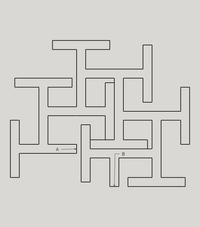
Photo from wikipedia
Collective behaviors are observed throughout nature, from bacterial colonies to human societies. Important theoretical breakthroughs have recently been made in understanding why animals produce group behaviors and how they coordinate… Click to show full abstract
Collective behaviors are observed throughout nature, from bacterial colonies to human societies. Important theoretical breakthroughs have recently been made in understanding why animals produce group behaviors and how they coordinate their activities, build collective structures, and make decisions. However, standardized experimental methods to test these findings have been lacking. Notably, easily and unambiguously determining the membership of a group and the responses of an individual within that group is still a challenge. The radial arm maze is presented here as a new standardized method to investigate collective exploration and decision-making in animal groups. This paradigm gives individuals within animal groups the opportunity to make choices among a set of discrete alternatives, and these choices can easily be tracked over long periods of time. We demonstrate the usefulness of this paradigm by performing a set of refuge-site selection experiments with groups of fish. Using an open-source, robust custom image-processing algorithm, we automatically counted the number of animals in each arm of the maze to identify the majority choice. We also propose a new index to quantify the degree of group cohesion in this context. The radial arm maze paradigm provides an easy way to categorize and quantify the choices made by animals. It makes it possible to readily apply the traditional uses of the radial arm maze with single animals to the study of animal groups. Moreover, it opens up the possibility of studying questions specifically related to collective behaviors.
Journal Title: Behavior Research Methods
Year Published: 2018
Link to full text (if available)
Share on Social Media: Sign Up to like & get
recommendations!